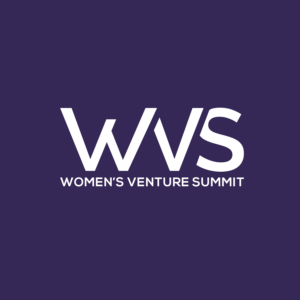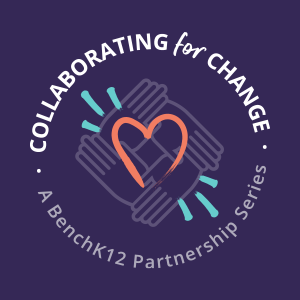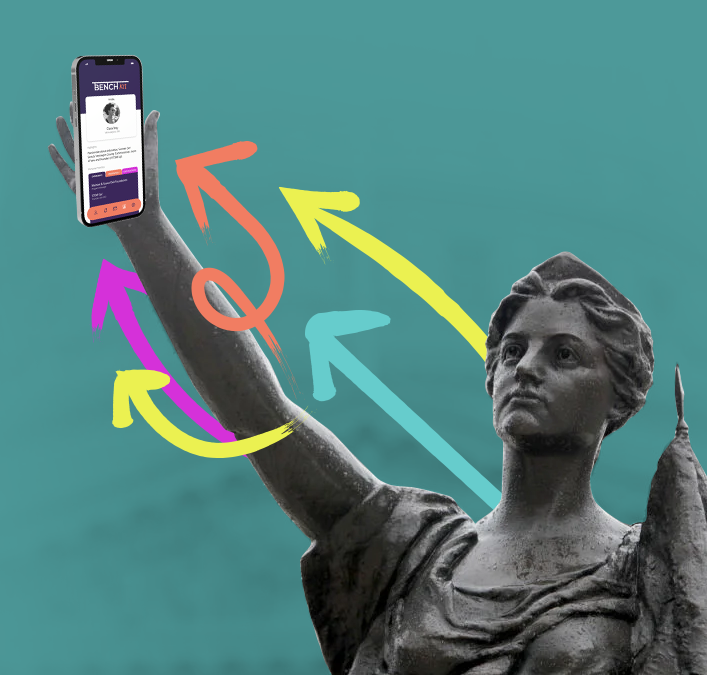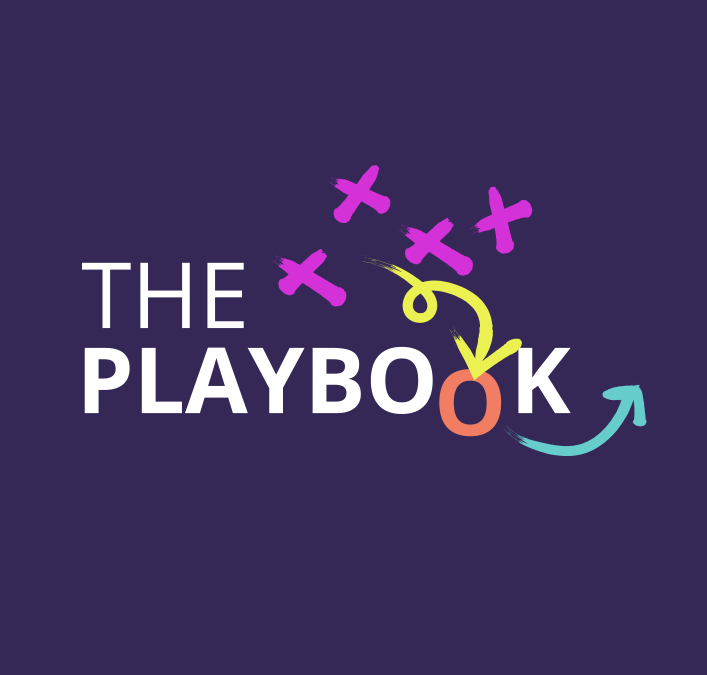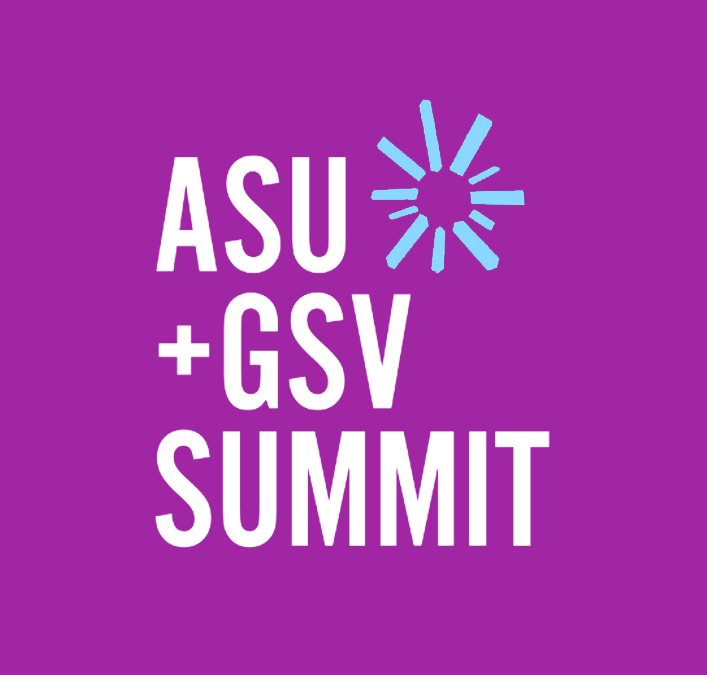
Reflections on my first ASU + GSV Summit
Reflections on my first ASU + GSV Summit
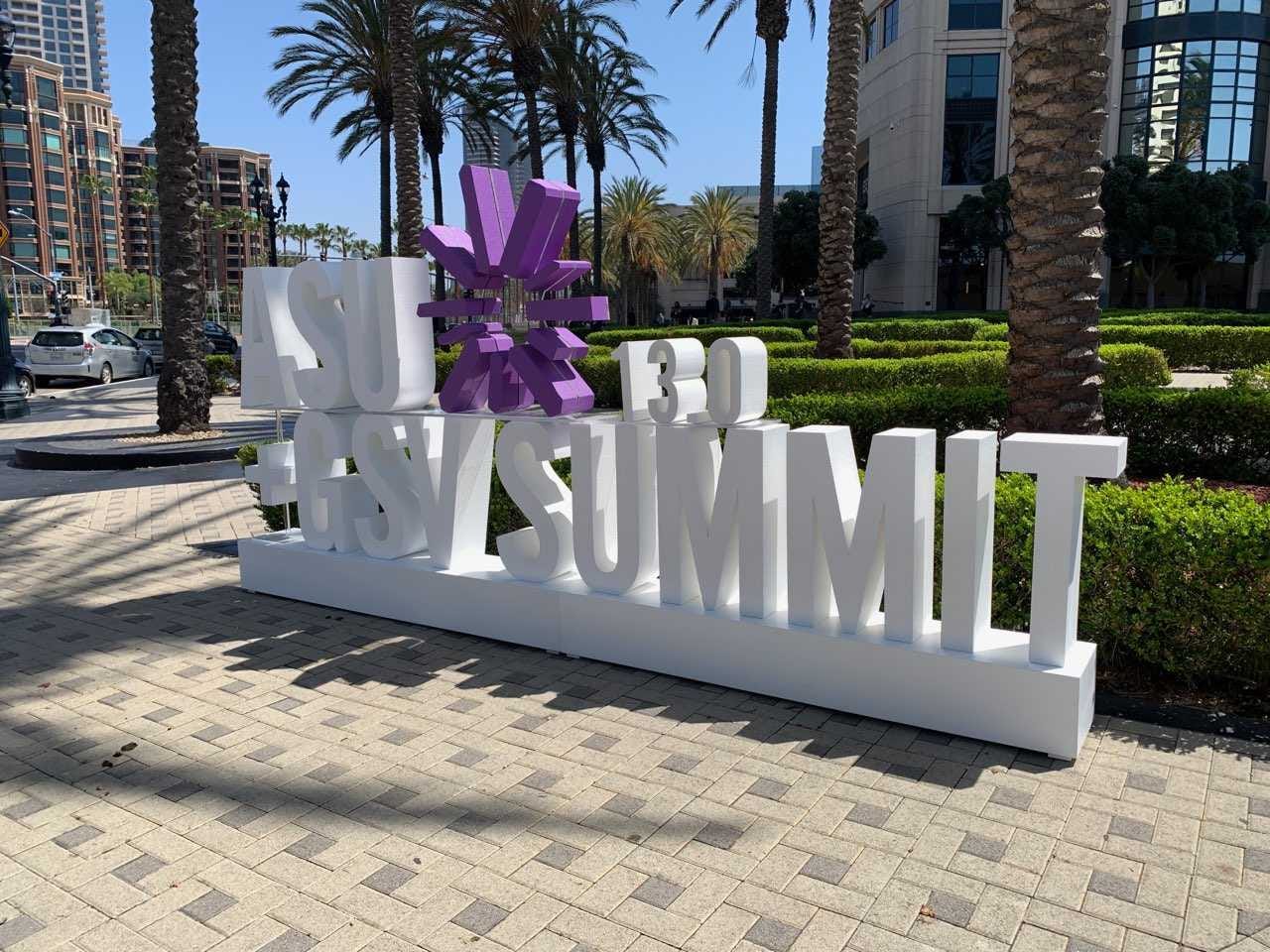 ASU+GSV 13.0 Summit Entrance.
ASU+GSV 13.0 Summit Entrance.
I’m writing this on the Thursday post-ASU+GSV Summit. Justice Jackson has been confirmed, my feet are sore from being in heels after a two-year hiatus (one pair didn’t survive the three days…), and my heart is full from reconnecting *in person* with friends near and far, and exhilarated exhaustion was had by all.
For those of you who are unfamiliar with the Summit, it “started in 2010 with a collaboration between Arizona State University (ASU) and Global Silicon Valley (GSV) [and it] connects leading minds focused on transforming society and business around learning and work.” Its “north star is that ALL people have equal access to the future” and a special note was made about how this is particularly relevant given the ongoing conflict and invasion of Ukraine. Kudos to the GSV Team for generously matching and raising funds for Ukraine families (join them!).
ASU + GSV Summit website and banner with a message of solidarity for Ukraine.
I wasn’t planning on attending in person this year, but as the requests started filing in for meetings and I looked through the attendee list on the ASU+GSV app, I realized it was time to emerge from my pandemic cocoon.
Live shot of me emerging from my house, pre-conference.
[Credit: Buffy the Vampire Slayer, S4.E05]
As an admitted ambivert (borderline introvert) being thrust back into jam-packed restaurants, bars, and conference halls felt a bit jarring at first. Thankfully, our lead angel investor and advisory board member, Mike Baur, was back at his *fifth* ASU+GSV representing AWS. He helped me navigate the throngs of attendees who, like us, seemed to be equally composed of veterans and newbies.
A much less flattering and much more green picture of Mike, as he led me through the first few hours of the conference. [Credit: Yoda.]
For those who haven’t yet attended an ASU+GSV, here are my first-timer tips to help you navigate next year (or any major education conference):
1.Build-in breaks. This is tough to do because you know you have limited time and you want to connect with a ton of folks, but to be at your best, you need some breathing room. Sometimes a meeting runs long, you need time to coordinate via emails and texts, and your brain needs to digest all the great conversations and ideas coming your way.
2.Figure out your meeting space in advance. I was wise enough to set up a few reservation slots in advance at Sally’s Fish House and make friends with a lovely server named Emily. If you go with a restaurant table, make sure you “buy” your time there by tipping generously and ordering snacks for the table as your guests rotate through. When I didn’t have enough time at Sally’s, I, like many others, was hunting for any place to sit and have a meeting that was conducive to a good conversation. Thank you, again, to AWS who let us use their room from time to time, and my other secret spot shall remain just that for future years…until next year when we announce our new and improved meeting space.
3.Bring an extra pair of shoes. RIP to a pair of my favorite nude heels and thank you to my new runners & the Hyatt gift shop for stocking socks!
RIP shoes. …until I get you fixed…
4.Put an OOO notice on your email with a backup contact, your mobile number, and an ETA for response times. You will not be answering many emails.
>5.Make a virtual card. If you are still riding the LinkedIn train, you can create a quick and easy QR code for your profile here. We signed up with HiHello which has a free card option that you can use as a signature in your emails or screenshot the code on your phone and use it as your background for easy scanning. I liked HiHello because it also prompts anyone who scans your code to share their contact information back with you and instantly stores it for you. It also includes a business card scanning tool for those still obsessed with keeping up with Paul Allen.
The Paul Allen card. [Credit: American Psycho]
6.Find a friend. Or two. As part of building in breaks, make sure you have a few friends who you can relax with, in between meetings. This aligns with number one, while also giving you time to unpack ideas with trusted eyes and ears. I’m happy to say I got to catch up with some old friends (and even talk Premier League soccer!) and make some new ones.
Beyond these general conference guidelines to help you get back into the swing of things, here are a few first timer observations I had about ASU+GSV, specifically:
1.It’s intense. It feels a bit like SXSWedu in the earlier days– a lot of vendors, entrepreneurs, investors, and leaders. I was lucky enough to have a free lunch on my second day and sat down with some awesome educators from Michigan, but that was the extent to which I felt any presence of educators at the conference. I do feel like there is an effort to bring more educators in and SXSWedu made this intentional shift as well, so I hope that it continues to balance out in future years. I also know –because it is [ahem] what we do– that it is incredibly hard for educators to take time away from the classroom for events like these, period, but especially during a pandemic. But we need more educators there and we need their day-to-day reality.
2.Web 3.0 was the focus, but most folks still don’t really know what that means for them. While we were excited to see the theme of the conference focused on Web 3.0 and verifiable credentials, a lot of folks we talked to said that they felt like we were one of the few companies that legitimately had a Web 3.0 strategy that made sense and had viable use cases. In fact, we often talk about how we really need Web 2.5 strategies right now to get us to a real Web 3.0 world. This isn’t something that you want to fake or work into your roadmap unless it applies to you, truly. Focus on solving your problem and if a decentralized solution makes sense use it. If not, don’t force it.
3.Are you a feature or a product? A lot of folks we talked to were also more focused on features versus products. While we’ve heard time and time again that there are riches in the niches, a lot of the early-stage companies we talked to felt *too* narrow– more like things that existing products should be able to do (i.e. features) vs. fully realized products. And many didn’t seem to have strategies to get them to more than that one thing. Education is saturated with that right now and our schools don’t have the capacity to just be testing grounds for nice-to-have features. I’d love to see investors serve as better arbiters of this. With a lot of the M & A happening in private equity, there’s a great opportunity to pull together a lot of features to make a great product, but that’s not happening yet. If paired with a future vision of Web 3.0, and cohesive technology to support it–rather than a lot of the “Frankenstein-ed” efforts we’re currently seeing, a lot of great solutions could exist.
4.Interoperability is still a massive challenge. See two and three above. Folks are *still* talking about “why can’t we decide on one standard?” and I don’t know if that is the right question. We’re close enough among standards that I don’t think that is what matters. A shift in how vendors do business, one that moves away from locking data into a crappy product, which is what the promise of decentralization could bring, will also get us closer to an interoperable future that better serves students, families, and educators–and can still be profitable. If you’re interested in that future, you’re in the right place with BenchK12.
5.It was worth it. This was the lucky number 13th year of the Summit and, as I shared previously, the first I’ve attended. I’ve always known about the Summit, but as an educator and then consultant to K12 orgs it never felt like the right place for me to spend time. I can affirmatively say that if you are an education entrepreneur or investor, this conference is well worth your time and effort to attend, even if you’re just hanging out at Sally’s, in the lobby, or hitting the many off-site events being hosted during the conference.
See you next year!



